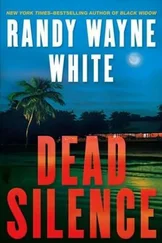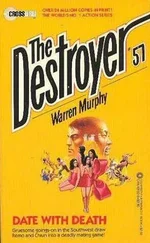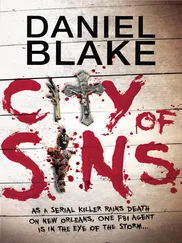1 ...6 7 8 10 11 12 ...19 ‘What does that involve?’
‘Some general stuff. Get a position, turn it round, see how best to play against it. Also preparing specific openings, a lot of the time. Opening lines are constantly getting developed and refined. You try ’em out, see what works for you. You find a variation you don’t like, you move on to another one.’
Checking through different lines, trying to look at positions from your opponent’s point of view: chess sounded a lot like detective work to Patrese.
‘Did you go to Penn to pick her up today?’
‘Yes?’
‘Were you concerned when she didn’t turn up?’
‘Yes.’
‘What did you do?’
‘I rang her cellphone. She didn’t answer.’
‘You think of doing anything else?’
‘Like what?’
‘Like ring the hotel in Baltimore?’
‘I had to meet with Nursultan and Tartu. She knew where I was going. I figured she’d gotten the wrong train and had no cellphone reception. I guessed she’d come right along to the Waldorf when she arrived.’
‘So your car’s still at the Waldorf?’
‘Yes.’
‘And you have no idea why your mother would have been in New Haven?’
‘No.’
‘No friends, family there?’
‘No.’
‘She lived here, that’s correct?’
‘Yes.’
‘May I see her room?’
‘Sure.’
It was clear from even a first glance that Regina had been a neat freak. Her bed was made to a standard that wouldn’t have disgraced the Waldorf-Astoria, the bottles and tubs on her dressing table were arranged with millimetric precision, and the clothes in her closet were color-coded. In the en-suite bathroom, the same level of order.
‘How many bedrooms are there here?’
‘Two.’
Patrese looked round the room again: high ceilings, south-facing, plenty of light. ‘If this is anything to go by, the master bedroom must be quite something.’
‘This is the master bedroom.’
Patrese looked surprised. ‘Where do you sleep?’
‘Next door.’
Kwasi’s room was smaller. His bed, a single, was jammed hard up against the far corner, the better to make room for as many bookshelves as possible. Chess books, Patrese saw, with titles that might as well have been double Dutch as far as he was concerned. An Anti-Sicilian Repertoire for White. Caro-Kann: Bronstein-Larsen. The Strategic Nimzo-Indian: A Complete Guide to the Rubinstein Variation.
‘Your mom had the master bedroom?’
‘Sure.’
‘Why, may I ask?’
‘Why not?’
Patrese was getting used to the rhythm of Kwasi’s speech and thought patterns now. Kwasi might be a genius on the chessboard, but quotidian details that seemed obvious to Patrese clearly passed Kwasi by.
‘Mr King, your success, your skill, your money bought this place. Most all homeowners I know, it’s the same thing: whoever buys the house gets the nicest room.’
Kwasi shrugged. ‘Don’t bother me. Bedroom’s just a place to sleep.’
Most twenty-four-year-old men thought bedrooms were a place to do pretty much anything and everything other than sleep, Patrese thought: but then again, most twenty-four-year-old men didn’t buy a Bleecker penthouse and then ask their mom to move in with them.
Patrese excused himself and went out on to the apartment’s private roof terrace. He had to talk to Kieseritsky, and thought it best to discuss gory details of beheading and amputation in private.
The terrace had wrought-iron railings set six inches too low for comfort. A few blocks to the south, floats and giant puppets were already beginning to gather in preparation for the parade. Patrese looked out over the river toward Hoboken.
As he dialed, Patrese could hear a low noise from inside the apartment. He wasn’t sure, but it sounded as though Kwasi was crying.
In the first few hours of any major homicide investigation, no news is most certainly not good news. Forensic evidence is fresh, eyewitnesses can remember what they’ve seen, people are willing to offer information. If detectives don’t get decent leads right from the get-go, their chances of solving the crime are seriously jeopardized.
Lauren Kieseritsky had two pieces of news for Franco Patrese.
First, they’d found a fingerprint on John Doe’s chest, and it belonged neither to him nor to Regina. They were running it through the system, so far without matches.
Second, they’d found a knife in the undergrowth on the Green: a hunting knife covered with Regina King’s blood. No fingerprints on it, and no evidence that it had been used on John Doe too. The knife was manufactured by a German company named Liberzon. Officers were trying to get hold of the company to check their US retail outlets.
Talking of John Doe – the Reverend John Doe – well, he was still unidentified. They knew that he wasn’t from New Haven itself or the immediate environs, as they’d checked every Catholic church within that area. They were now spreading that search outwards, looking for any missing priests within an hour’s radius of the city. If that brought no joy, they’d extend it to two hours’ radius, and so on.
No one had come forward to say they’d seen anything suspicious on the Green. Shortly before one in the morning, a couple had walked past the church and treeline in question and had seen nothing. Whoever had killed Regina King and dumped John Doe’s body must have therefore done so after that time.
This concurred with the medical examiner’s preliminary findings. Taking into account the bodies’ exposure to several hours of a crisp fall night and the subsequent effect on the temperatures of the cadavers, the medical examiner had put Regina King’s time of death as between 1.30 and 2.30 a.m., and John Doe’s as between 3.00 and 4.00 a.m. In other words, John Doe had been killed after Regina, in a different location, and then brought to the Green.
There were no bullet holes in the bodies, and no stab wounds to the vital organs. A full toxicological analysis was still pending, but the most basic tests had showed up no evidence of poisons, sedatives or intoxicants. Blood splatter and flow patterns – particularly the difference between pre-mortem and post-mortem bleeding – suggested that the victims’ arms and skin patches had all been removed post-mortem. It was therefore most likely that the act of decapitation itself had killed both Regina King and John Doe.
Wouldn’t they have screamed? Not if the killer had put a rag in their mouths. Certainly not once he’d severed their larynxes.
No sexual interference in either case. That was interesting. Dismemberment is usually sexual and often connected with picquerism, where the killer is aroused by stabbing, pricking or slicing the body; all obvious substitutes for penile penetration, of course. The slicing was here – both in terms of the missing arms and heads, and the patches of skin removed – but there was no sexual interference and no stabbing.
Criminology theory holds that there are five forms of dismemberment: the practical, the narcotic, the sadistic, the lustful and the psychotic.
Practical usually involves cutting up bodies to make them easier to transport or store, which didn’t seem to be the case here. Regina had been alive when she’d come to the Green; it was hard to see how removing John Doe’s head and arm would have made him materially easier to move.
Narcotic, as in the perpetrator being off his head on drugs; well, that was a possibility in Regina’s case, given the frenzy with which she had been attacked, but not for John Doe, whose killing had been a work of clinical precision.
Sadistic; unlikely, even given the gruesome method of death. Those things which would inflict unimaginable pain on a person, such as amputating their arm and removing their skin, had been done post-mortem.
Читать дальше

![Элизабет Ленхард - Свидание со смертью[Date With Death]](/books/79651/elizabet-lenhard-svidanie-so-smertyu-date-with-dea-thumb.webp)










